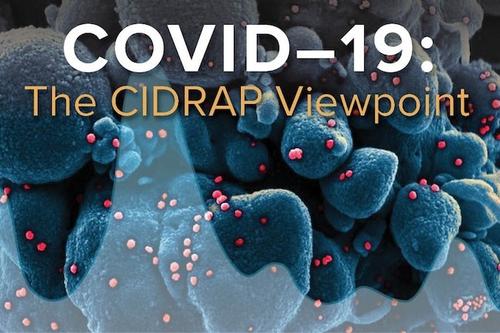In new report, CIDRAP at the University of Minnesota recommends a tailored approach to contact tracing

Contact tracing—in which officials contact those who were likely exposed to an infected person to potentially test, isolate or quarantine them—is a cornerstone of outbreak response and has been cited by many as essential to slowing the spread of COVID-19.
But, according to a new report from the Center for Infectious Disease Research and Policy (CIDRAP) at the University of Minnesota, contact tracing, like other pandemic response tools, must be done strategically, with the end goal always in mind and any constraints factored in and hurdles worked through.
Traditional contact tracing usually includes in-person notification of the contact by a public health official who arranges for treatment, preventive therapy, and isolation and quarantine as indicated by exposure or infectious status. Contact tracing is most effective when the incidence of infection in a population is low and when cases and contacts can quickly be identified.
“Contact tracing for COVID-19: Assessing needs, using a tailored approach,” the fourth report in a multipart series titled, "COVID-19: The CIDRAP Viewpoint," was published today. The report calls for public health officials to adopt a data-driven, needs-based approach to contact tracing for COVID-19.
In the report, CIDRAP raises several major questions that state and local health departments, with support and guidance from the Centers for Disease Control and Prevention, need to address as more states embark on implementing contact tracing for COVID-19, keeping in mind that a “one-size-fits-all” approach would not be in the best interest of public health.
Key questions:
- Is there a sufficient benefit to widespread contact tracing for COVID-19 to justify the cost?
- What are the key public health lessons we can learn from this effort?
- How effective will quarantine measures be for contacts?
- What is the role of technological tools, such as apps, in contact tracing, and how can privacy concerns be adequately addressed?
- What are the potential adverse impacts of widespread contact tracing?
CIDRAP also recommends several measures that states should implement as soon as possible, as COVID-19 community transmission in the U.S. is ongoing and may accelerate as states ease their physical distancing constraints.
Among the recommendations:
- As contact tracing programs for COVID-19 are expanded in the United States, efforts to rapidly assess the value, outcomes, and benefit of such programs are urgently needed to ensure that limited public health resources are targeted to the most effective strategies. Adapting a “one-size-fits-all” approach is not optimal.
- National guidance is needed to define the parameters for using contact tracing during different phases of the COVID-19 pandemic, including determining the “end game” for when this effort can be de-escalated or completely demobilized (e.g., Will this be based on declining case numbers? Will it be continued until a vaccine is available and deployed? Should it be continued until the pandemic is declared over?).
- Public health leaders should determine if targeted contact-tracing approaches—such as for household contacts, healthcare facilities, assisted living and long-term care facilities, congregate living facilities, correctional facilities, worksites with confirmed cases or case clusters, and community settings where localized outbreaks appear to be occurring—are more feasible and more effective for COVID-19 than broad-brush efforts.
- State and local health departments need to ensure that messaging from the contact tracing workforce is culturally appropriate and that adequate social and economic support systems are in place for those who are identified as contacts.
- Ongoing assessment is needed to evaluate training methods for contact tracers and identify strategies for improvement.
”We urgently need to determine the effectiveness of contact tracing efforts and what their role should be as part of our COVID-19 prevention activities,” said Michael Osterholm, Ph.D., M.P.H., CIDRAP director and University of Minnesota Regents Professor, McKnight Presidential Endowed Chair in Public Health. In addition, he emphasized the importance of determining how digital technology can be used in contact tracing.
Future reports in the "COVID-19: The CIDRAP Viewpoint" series will address SARS-CoV-2 surveillance, respiratory protection, supply chain issues and other key topics.
COVID-19 is a respiratory illness that was first identified in Wuhan, China, in December 2019. Confirmed U.S. cases recently topped 1.8 million, and the global total has now topped 6.3 million confirmed infections, including more than 370,000 deaths.
The Viewpoint reports are made possible with support from the University of Minnesota Office of the Vice President for Research and the Bentson Foundation.
About the Center for Infectious Disease Research and Policy
The Center for Infectious Disease Research and Policy is a global leader in addressing public health preparedness and emerging infectious disease response. Founded in 2001, CIDRAP is part of the Office of the Vice President for Research at the University of Minnesota.




